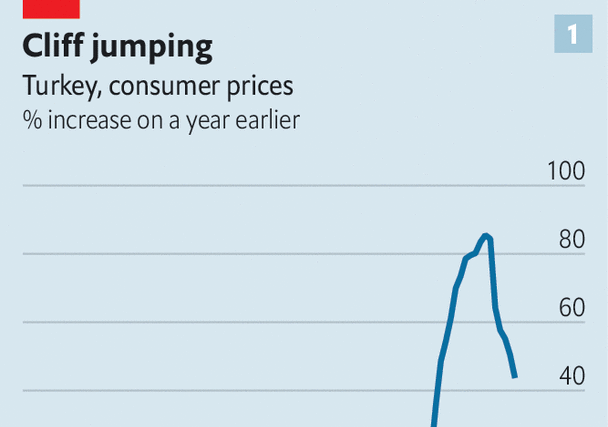Every bank has had to deal with technical debt at some point but now it’s preventing them from modernising their customer experience. Failure to modernise will result in lost clientele to emerging fintechs and neobanks who are not faced with the same burdens.
With many banks using legacy technology, it’s getting more costly to update the services needed to compete with emerging fintechs and neobanks that don’t have anywhere near the technical debt of traditional banks.
Carl Robinson is the chief revenue officer for Dragonfly Financial Technologies, the digital banking and treasury management solutions provider. Robinson brings over 27 years of digital banking and global payments experience. Prior to joining the DragonFly, Robinson held executive roles and lead sales, revenue, marketing and account management teams at EDS, Hewlett Packard, Oracle, Sterling Commerce, Fundtech/Finasta, ACI, Infosys and most recently Alacriti.
He sat down with The Fintech Times to explain how the burden of technical debt is impacting the banking system. Furthermore, he explains how it’s challenging banks to respond to current and future market conditions and how they can decrease their tech debt to better compete with emerging fintechs and neobanks, as well as deal with future banking turbulence.
Technical debt is standing in the way of banks’ modernisation
Every bank today has some element of technical debt. However, banks often have little visibility into the business, operational impact and risk that this tech debt imposes. Banks and legacy systems have accrued and designed around this technical debt for years. Now, it’s preventing banks from modernising their customer experience and meeting the real-time needs of today, and more importantly, tomorrow’s banking needs.
Technology debt is impeding their ability to innovate and compete with emerging fintechs, neobanks and composable banks. According to Cornerstone Advisor’s 2023 What’s Going on in Banking Report, 49 per cent of bank and credit union executives believed fintechs to be a significant threat in the upcoming decade, surpassing mega banks and tech companies.
With many traditional banks still hampered by legacy technology, it’s getting more costly to update the services needed to compete with emerging fintechs and neobanks that don’t have the technical debt of traditional banks.
What is technical debt?
The term technical debt isn’t new and has been around since 1992. Its definition has evolved from speaking about the upkeep and maintenance of software development to the entire technology strategy and operations.
For years, banks have relied on legacy, monolithic technology to power and scale their digital banking operations from onboarding to information reporting and payments. But as traditional banks compete with nimbler, more adaptive fintechs, legacy technology, monolithic applications and the significant tech debt is standing in the way of banks competing for business and corporate customers.
A McKinsey study, Demystifying digital dark matter: A new standard to taming technical debt, estimates the cost of one company’s tech debt as anywhere between 15-60 per cent of every dollar spent on IT. In the same study, a large bank estimates that its 1,000 systems and applications together generate over $2billion in tech debt costs.
Tech debt is a significant expense and risk to the bank but is often hidden deep within the underlying fabric of the front and back office systems, far from the optics of bank management. Many banks outsource their technology operations to a SaaS or provider and do not have full transparency of their tech debt. But they are devoting a significant amount of their technology spend to maintaining, working around and keeping these legacy monolithic systems in place. But banks can begin to limit their tech debt in three easy steps:
Understand overall tech spending
Many bank technology teams outsource their IT operations and leave the day-to-day maintenance to vendors. Oftentimes, bank tech teams do not have visibility into how their vendors are operating and the amount of tech debt they are accruing.
As a first step, bank IT teams should audit their outsourced vendors to better understand where their tech budgets are being spent: innovation, R&D, maintenance, risk or technology debt and renovation. If a tech vendor is spending more than half its time addressing tech debt, renovation patching legacy system fixes, it’s time for banks to ‘clean house’ and re-evaluate their technology strategy.
With the deployment of FedNow and fast approaching real time 24×7 back-office bank processing, now is the time to assess technology debt and put a strategy in place to replace these monolithic applications. While every organisation has some tech debt spend and exposure, organisations should strive to keep these costs down and proactively manage this exposure.
As banks become more digital, they must proactively assess and measure their tech debt and look for ways to reduce the tech debt exposure and cost. Similar to how organisations would proactively manage financial debt. Some tech debt is expected for an organisation to rapidly grow and compete. However, not understanding the full range of a bank’s tech debt is rapidly evolving into a recipe for failure.
Consider moving services to the cloud
The banking industry has been slow to adopt moving technology operations to the cloud, but traditional banks consider it a priority for 2023. According to Cornerstone Research, only 53 per cent of banks have deployed cloud services.
While banks can take the easy way out and ‘lift and shift’ on-premises workloads to the cloud, this will not mitigate the complete risk and exposure of the bank’s technical debt. To make the most of cloud adoption benefits and manage technical debt, banks must rethink and adapt their on-premises and data center processes to the cloud.
By moving to the cloud, banks’ IT teams can fully automate virtual infrastructure provisioning, expedite code deployment, refine testing, threat detection, monitoring, observability and proactive alerting, as well as distributed disaster recovery. By taking full advantage of leveraging the cloud, banks will be able to automate tasks and capitalise on digital transformation efforts, allowing banks to reduce and proactively manage their technical debt.
Build a composable banking infrastructure
It’s difficult for banks to completely replace legacy technology, but they can reduce and renovate their reliance. Composable banking solutions can help banks pick and choose where to upgrade their digital banking operations.
For example, banks can use composable banking granular building blocks to automate onboarding, deploy entitlements or help with embedded payments and remittances. HFS Research suggests whether you are a 100-year-old bank or a two-week-old bank, the future of banking is increasingly built on digital customer experience, combined with a composable technology stack that allows for composable events and API-enabled integrations of best-of-breed tools.
This foundational approach results in a rapid configuration and deployment of personalised and flexible new banking products and tailored, personalised client offerings. Composable banking allows banks to renovate their legacy technology while simultaneously modernising their client experience. Through automating and modernising via APIs, banks are reducing their technology dependency on legacy solutions and as a result reducing their overall technical debt.
As banks continue to invest and modernise their IT and operations, the goal of delivering an intuitive and tailored customer experience that rivals leading fintechs like Stripe and PayPal will be imperative to their success.
By proactively assessing, managing and reducing technical debt, banks can free up the capital to invest in technologies like cloud computing and composable banking that will allow them to innovate and rapidly respond to client needs, and spin up new products and services without investing, maintaining or adding to technical debt.




The Most Read
Сryptocurrencies
Bitcoin and Altcoins Trading Near Make-or-Break Levels
Financial crimes
Thieves targeted crypto execs and threatened their families in wide-ranging scheme
Financial crimes
Visa Warning: Hackers Ramp Up Card Stealing Attacks At Gas Stations
News
Capitalism is having an identity crisis – but it is still the best system
Uncategorized
The 73-year-old Vietnamese refugee is responsible for bringing Sriracha to American consumers
Uncategorized
Electric Truckmaker Rivian, Backed By Amazon, Ford, Raises Whopping $1.3 Billion